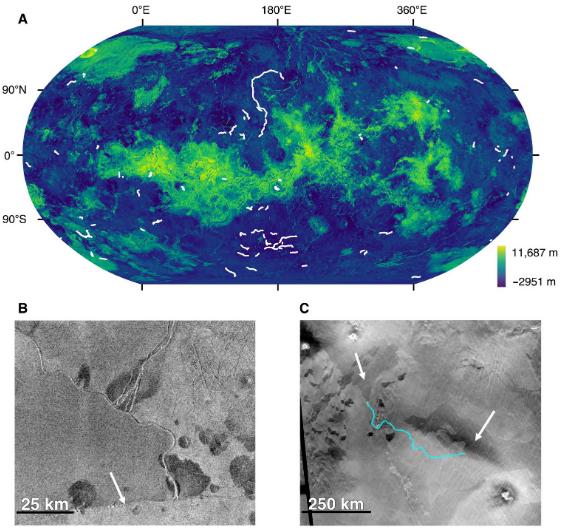
金星通过发展以二氧化碳(CO2)为主的大气而偏离了地球的进化路径,尽管研究对这种大气是在吸积后不久出现还是在表面可居住的漫长时期之后出现存在争议。广泛的火山特征表明,火山喷发可能在金星的转变中发挥了关键作用。然而,金星上由玄武岩熔岩形成的火山单元只能释放出当前大气中二氧化碳的一小部分。
研究组模拟了金星上被称为运河的长而蜿蜒的河道的侵蚀,并表明碳酸盐岩熔岩具有侵蚀运河所需的独特性质。该研究结果表明,这些碳酸盐的喷发可能释放了与现代大气相当的二氧化碳总量,解决了金星大气层在最近过去形成的挑战,并表明“金星带”的系外行星可能表现出长期宜居性的潜力。
附:英文原文
Title: The importance of carbonatite lavas in outgassing Venus’ modern-day atmosphere
Author: Allyson R. Trussell, Joseph G. O’Rourke, David A. Williams, Ian T. W. Flynn, Benjamin A. Black, Madison E. Borrelli
Issue&Volume: 2025-08-08
Abstract: Venus diverged from Earth’s evolutionary path through the development of a carbon dioxide (CO2)–dominated atmosphere, although studies dispute whether this atmosphere arose shortly after accretion or after a protracted period of surface habitability. Widespread volcanic features suggest that volcanic outgassing may have played a pivotal role in the transformation of Venus. However, the formation of volcanic units on Venus by basaltic lavas can only outgas a minor fraction of the CO2 in the current atmosphere. Here, we model the erosion of long, meandering channels on Venus called canali and show that carbonatite lavas have the unique properties required to erode the canali. Our results suggest that eruption of these carbonatites may have delivered a total mass of CO2 comparable to that of the modern atmosphere, resolving challenges to the formation of Venus’ atmosphere within the recent past and suggesting that exoplanets in the “Venus zone” may exhibit the potential for prolonged habitability.
DOI: adw1621
Source: https://www.science.org/doi/10.1126/sciadv.adw1621
